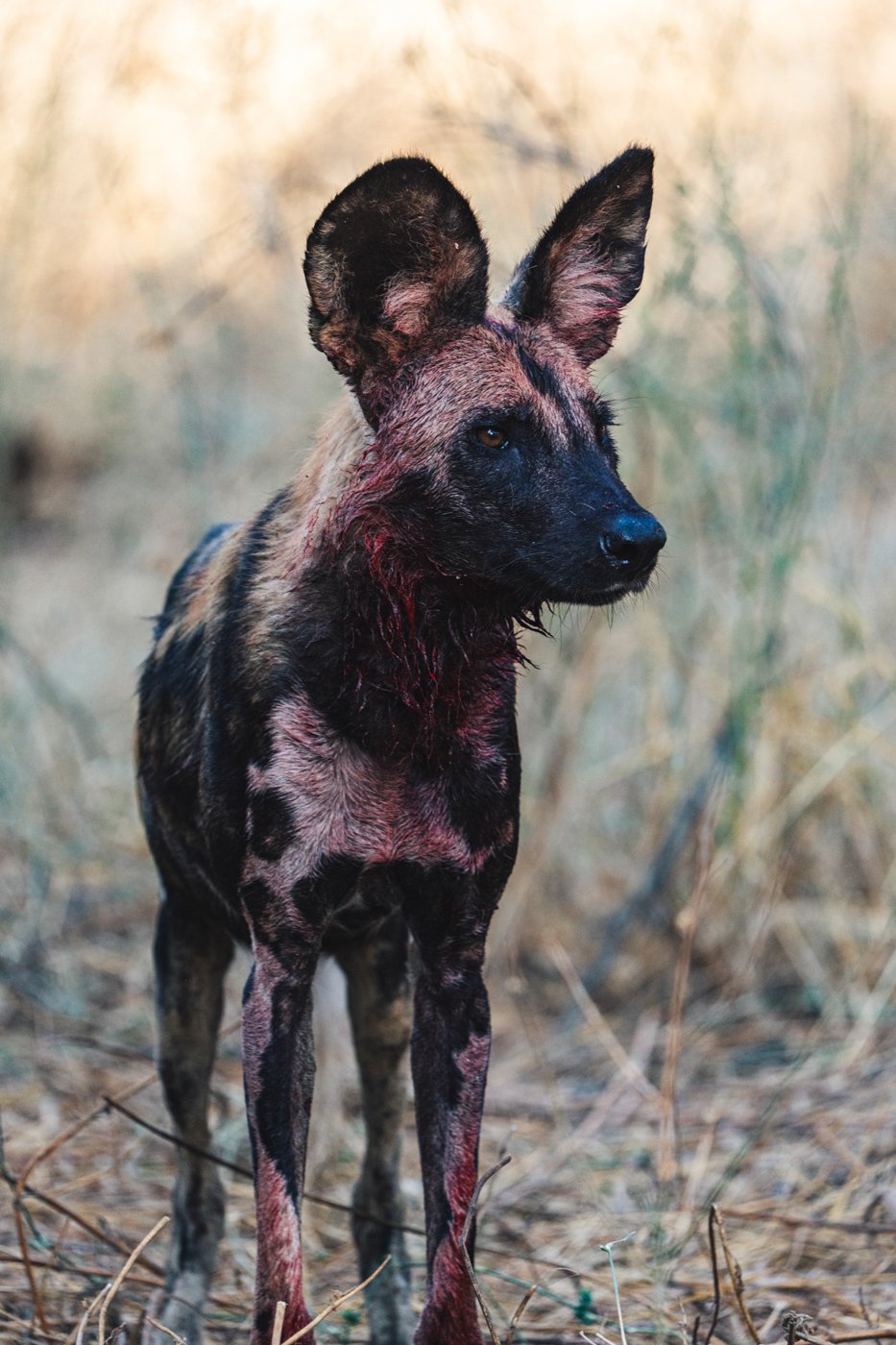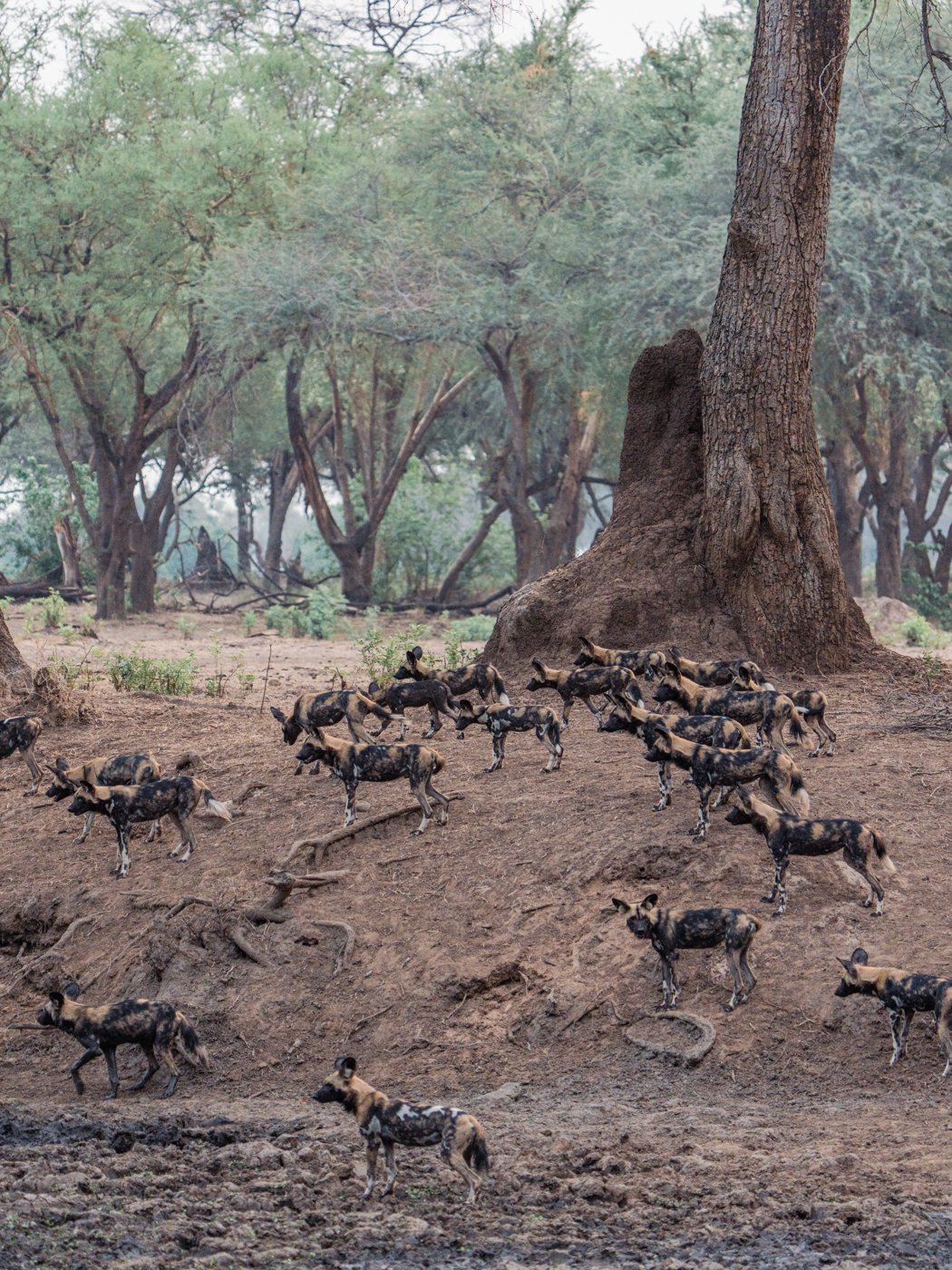The African Painted Dogs: Endangered Species and Their Strongholds in Zambia
African painted dogs, also known as African wild dogs, painted wolves or Cape hunting dogs, are highly endangered canines native to sub-Saharan Africa. Known for their quintessential Mickey Mouse ears, social nature and formidable hunting skills, painted dogs are a favorite sighting for many on safari. Zambia is home to a growing population of painted dogs, and Lower Zambezi is one of the best locations to witness these beautiful creatures in action. The legendary pack that roams the forest has been captures by many documentary crews, most notably for their incredible ability to hunt buffalo.
African painted dogs (Lycaon pictus) are the largest wild canines in Africa and are characterized by their uniquely patterned coats, consisting of black, brown, white, and yellow markings. Each dog’s coat is unique, similar to a human fingerprint. These dogs are highly specialized for a hypercarnivorous diet and possess dentition adapted to their hunting lifestyle. Unfortunately, due to various threats including habitat loss, human wildlife conflict with farmers and livestock, and disease, their populations have drastically declined over the past few decades.
The current population of African painted dogs is estimated to be around 6,600 adults in 39 subpopulations, of which only 1,400 are mature individuals. However, estimates vary and some sources suggest that the population may be as low as 3,000 to 5,500 individuals. They are largely extinct in North and West Africa, with significant populations only in southern and south-eastern Africa.
Remaining strongholds for painted dogs include Zambia, Botswana, and Zimbabwe, which serve as crucial habitats for this endangered species. These countries have dedicated efforts towards their conservation and provide vital protected areas for these animals to thrive.
Zambia and the Lower Zambezi National Park boast a remarkable landscape that supports a diverse range of wildlife. Situated along the Zambezi River, is one of Zambia's prime conservation areas, Lower Zambezi offers a critical sanctuary for African painted dogs, providing them with a suitable habitat for survival.
African painted dogs live in large packs, consisting of around 20 adults, with Lower Zambezi’s primary pack hitting an all-time high of an astounding 46 individuals in October of 2022. Their social structure is highly organized, with a dominant breeding pair leading the pack. The pack works together to hunt for prey, utilizing cooperative strategies and effective communication. They exhibit remarkable teamwork and coordination during hunts, enabling them to take down prey that is often twice their weight. Furthermore, painted dogs assist the breeding pair in rearing their pups, emphasizing the significance of cooperation within the pack.
Painted dogs perform a greeting ceremony each time the pack reunited, even including waking up from a nap. While greeting and playing, they make a distinct chittering sound which is a sign of excitement. Family structure is vital to African painted dogs and this species is known for caring for weak, elderly and injured pack members rather than leaving them behind. The complex social structure and bonds within the pack allow them to thrive in numbers.
African painted dogs play a vital role in maintaining the overall health of the ecosystem in which they reside. As hypercarnivores, they help control the population of herbivores such as impalas and other antelope, contributing to the balance of the ecosystem. By preying on the weaker or injured individuals, painted dogs indirectly enhance the genetic quality of the prey species. Their hunting behavior also prevents overgrazing and habitat degradation, benefiting other species and promoting biodiversity within their habitats.
African painted dogs, endangered and highly specialized predators, face numerous challenges that have contributed to their declining populations. Zambia, Botswana, and Zimbabwe are recognized for their conservation efforts and serve as strongholds for these remarkable creatures. The Lower Zambezi National Park in Zambia plays a crucial role in preserving the habitat of African painted dogs. Furthermore, their unique social structure, cooperative behavior, and their important role in the ecosystem highlight the significance of their conservation efforts for maintaining the overall health and balance of African ecosystems.





